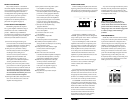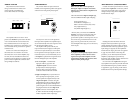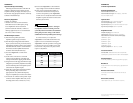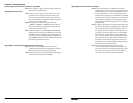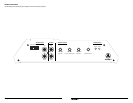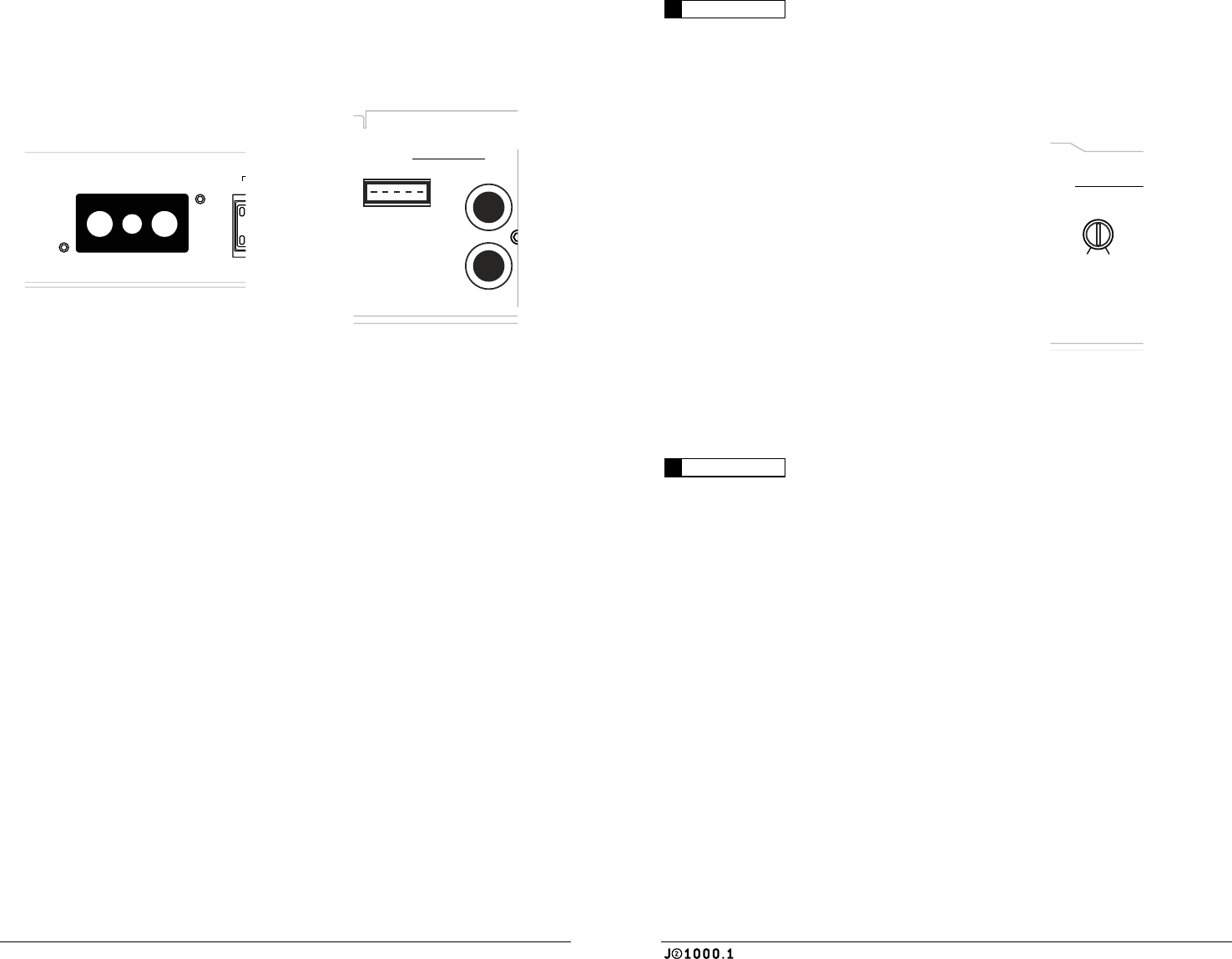
6 JL Audio
7
IMPORTANT
!
Make sure you observe correct polarity in
making the “High-Level Input” connections.
Failure to do so will result in a complete loss of
signal (no bass).
The connections for the “High-Level Inputs” plug
wires are as follows from left to right on the plug:
White: Left Positive (+)
White/Black: Left Negative (–)
Black: Common Ground (rarely used)*
Gray: Right Positive (+)
Gray/Black: Right Negative (–)
*The only time you will use the “Common
Ground” connection is with some older (pre-
1980’s) factory systems or head units that
ground their speakers to chassis ground. To use
this connection, ground the black wire on the
plug to chassis ground and only connect the
Left and Right Positive plug wires to the factory
radio outputs.
IMPORTANT
!
If you plan to use the preamp outputs to feed a
stereo amplifier, you must connect a stereo
signal to the input of the amplifier. A mono
signal into the amplifier will result in a mono
signal out of the preamp output.
“INPUT SENSITIVITY” GAIN ADJUSTMENT
Located next to the input connectors is a rotary
control labeled “Input Sens.”. This rotary control
can be used to match the source unit’s output
voltage to the input stage of the amplifier for
maximum clean output.
LP Filter Frequency (Hz)
Input Sens.
Bass Boost Remote Level Port
min max 40 300 O +12dB
ProtectPower
High-Level Inputs
LEFT
RIGHT
LEFT
RIGHT
Amplifier ControlsAmplifier Inputs Pre-Outs Amplifier Status
Rotating the control clockwise will result
in higher sensitivity (louder for a given input
voltage). Rotating the control counter-clockwise
will result in lower sensitivity (quieter for a given
input voltage). To properly set the amplifier for
maximum clean output, please refer to Appendix
A (page 12) in this manual. After using this
procedure, you can then adjust the level of the
amplifier by adjusting the input sensitivity
downward, if the amplifier requires attenuation to
achieve the desired system balance.
Do not increase the “Input Sens.” setting for
any amplifier in the system beyond the maximum
level established during the procedure outlined
in Appendix A (page 12). Doing so will result in
audible distortion and possible speaker damage.
“REMOTE” TURNON
The J2-1000.1 is turned on and off
using a conventional +12V remote turn-
on lead, typically controlled by the
source unit’s remote turn-on output.
Made in China
35A35A35A
The amplifier will turn on when +12V is
present at its “Remote” input and turn off when
+12V is switched off. If a source unit does not
have a dedicated remote turn-on output, the
amplifier’s turn-on lead can be connected to +12V
via a switch that derives power from an ignition-
switched circuit.
18 AWG wire is more than adequate for
the remote turn-on connection. To connect
the remote turn-on wire to the amplifier, strip
1/2-inch (12 mm) of insulation from the wire
and insert it into the “Remote” receptacle on the
power connector. Tighten the connector down
using a Phillips screwdriver.
“AMPLIFIER INPUTS”
The J2-1000.1 offers two input connection
methods, one for high-level (speaker level) signals
and one for low-level (preamp level) signals.
LP Filter Frequency (Hz)
Input Sens.
Bass Boost Remote Level Port
min max 40 300 O +12dB
ProtectPower
High-Level Inputs
LEFT
RIGHT
LEFT
RIGHT
Amplifier ControlsAmplifier Inputs Pre-Outs Amplifier Status
You may run a stereo or a mono signal into
the inputs of the amplifier. The amplifier’s input
section automatically sums stereo signals to mono
for the internal amplifier section.
The amplifier will operate with only one
input connection (left or right), but will require
an increase in input sensitivity to overcome the
loss of signal. If a mono input signal is to be run
into the RCA jacks, we recommend that you use
a “Y-adaptor” to split the mono signal into both
the Left and Right inputs of the amplifier.
1) Low-Level Inputs: A standard left/
right pair of RCA type jacks in the
“Amplifier Inputs” section is used for
preamp level (low-level) signal input
on the J2-1000.1. This is the preferred
connection method whenever available.
2) High-Level Inputs: If your system does not
offer a preamp level signal option, you can
connect speaker level signals directly to the
“High-Level Inputs” connector using the
supplied mating connector and wire harness.
Simply splice the appropriate left/right and
positive/negative wires to the included harness
and plug the harness into the “High-Level
Inputs” connector on the amplifier. The
J2-1000.1 will attenuate the high-level signal to
make it compatible with its input stage.





